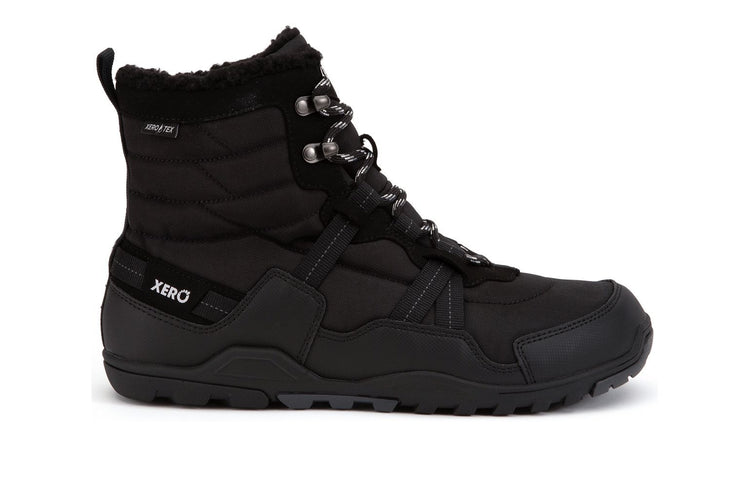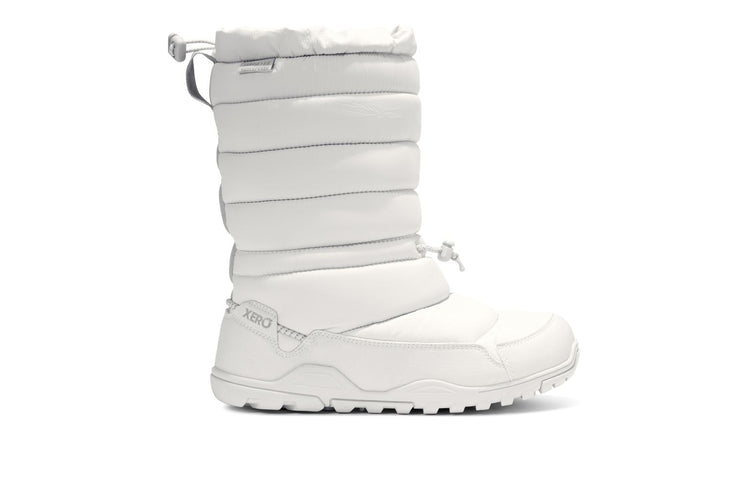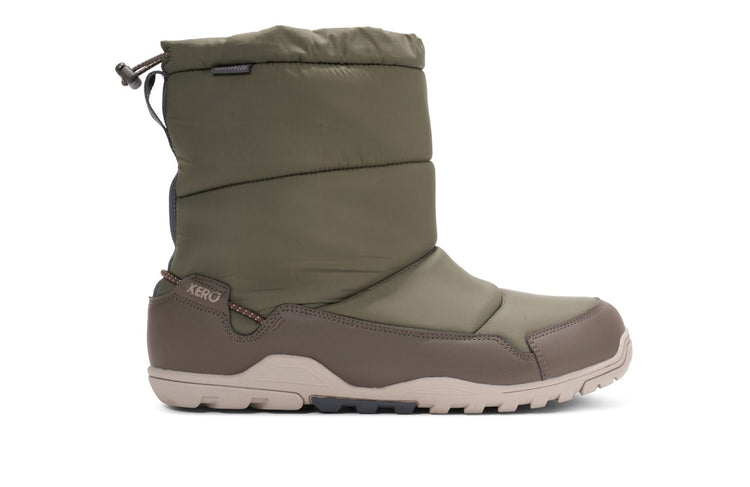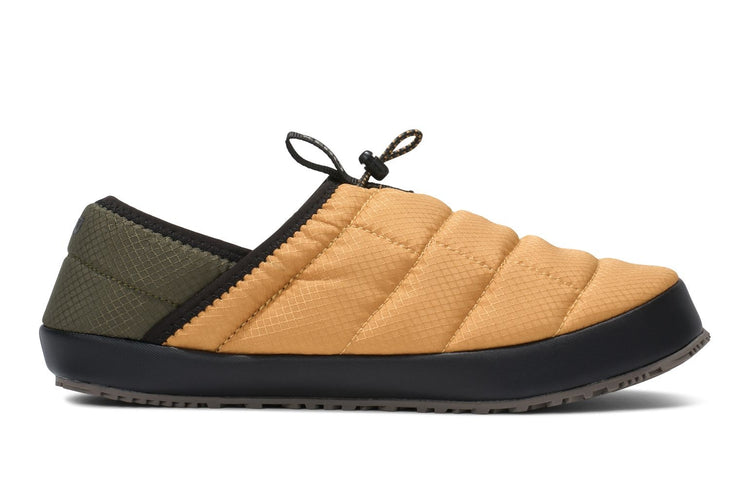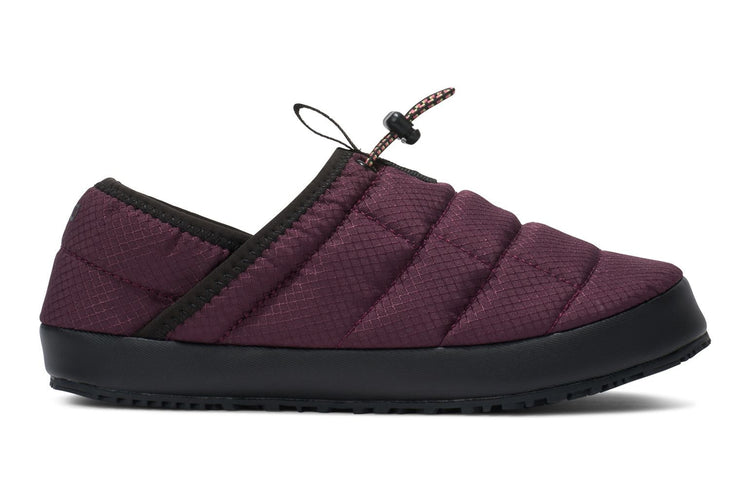latest News
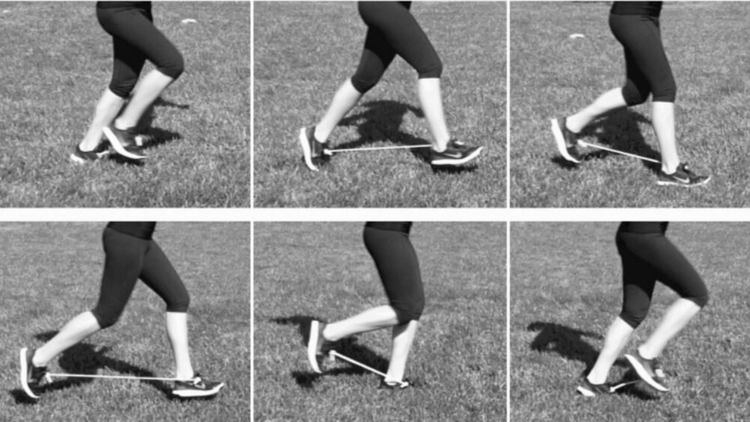
A Rubber Band is the Secret to Better Running?
Could a new form of foot binding be the secret to better running?I don't mean wrapping up your feet in the infamous style of ancient China, but something developed by some mechanical engineers at the University of California, Santa Barbara.In short, they attached some rubber tubing between runners shoes and found that they ran more efficiently.Every stride, you slow your body down and speed it back up again," losing energy that could otherwise be conserved or put into running faster, said Elliot Hawkes, who was a postdoctoral fellow at Stanford when the research was conducted. "90 percent of the energy you put into running is wasted, in a sense.The solution to this, according to the researchers?Tie the legs together with a rubber band. Adding that band between a runner's legs could help slow both legs when they are far apart, then give them a little kick as they came back together--saving energy at both ends.While they didn't publish images of runners who weren't using the rubber tubing, here's what they showed for runners who used what they call an "exotendon":What was the effect?An improvement in VO2 Max (what many people think of as running efficiency) by an average of 6.4%Sounds amazing right?But before you go out and buy an exotendon, let's take a look at what's REALLY going on here.Can you see what the rubber band does?Start by looking at the middle image in the top row, above.You can see that the runner is about to land on their heel, with the foot relatively far in front of their body. This is a typical "overstriding and heel strike" pattern.When you run like this, every time your foot hits the ground that far in front of you, you're basically putting on the brakes. And when you land on your heel like that, research shows that you're sending force into your joints rather than using your muscles, ligaments and tendons naturally -- as built-in springs and shock absorbers.Now look at the far right image in the top row.The runners foot doesn't actually land as far in front, or as much on the heel, as it would if it weren't being pulled back by the rubber band.You can see in the bottom row that the runners form has changed and isn't overstriding as much, and is landing in a more mid-foot pattern.Hopefully, I just saved you some money or time. No need to buy or build your own exotendon.What the exotendon is doing is giving the runner a cue to run in the way that most people do when they get out of padded, elevated-heel, motion-controlled shoes!Want the same effect?Simply take the time to adapt to "natural running," by landing with your foot closer to your center of gravity instead of far out in front of you, and land, ideally, on your forefoot (no need to STAY on your forefoot only, let your foot do what's natural and use the springs built into it... your heel can drop to the ground if it feels right to do so).BTW, while many barefoot runners say that either a midfoot or forefoot landing is what you want to do, research from Harvard's Irene Davis shows that impact forces are lower with a forefoot landing than a midfoot one. So if you're a mid-footer now, you may want to experiment with "moving up" to the forefoot.Another thing that the rubber band did for runners: their cadence went up. That is, the number of times their feet hit the ground in a minute increased (without running faster). Obviously, you can do that on your own, too.The researchers say that the exotendon only works when running on flat surfaces. Needless to say, you can use natural movement anywhere, any time, under all conditions.To be fair, I'm actually NOT badmouthing the exotendon. In fact, it could be a great training aid to help people feel what a better movement pattern is like and make the switch.But it's important to know what's really going on, what the real purpose of the device is. That could actually make it MORE effective, and wean you from it more quickly.Frankly, I'm in favor of whatever it takes to help you Live Life Feet First.Keep this one last thing in mind though -- if you thought you go weird looks when you tried running barefoot, or even in Xero Shoes, just wait until you hear the comments when you strap a rubber band to your feet and hit the roads!The content of this post does not constitute and is not intended to be a substitute for professional medical advice, diagnosis or treatment. Always seek the advice of a physician or other qualified health provider with any questions or concerns you may have about your health or a medical condition.
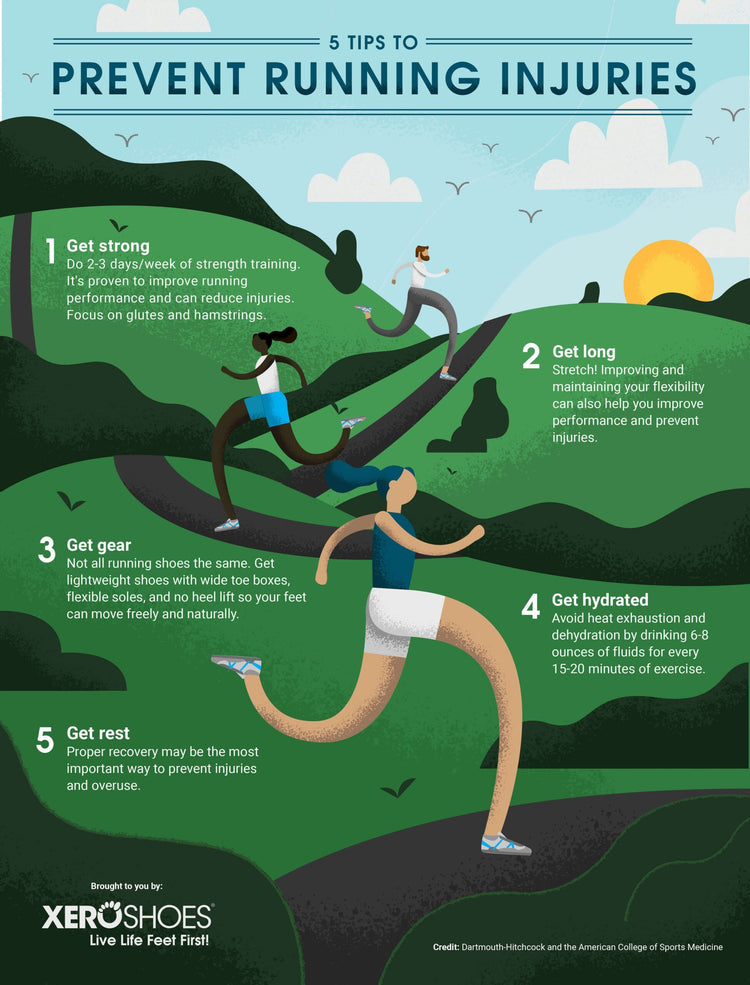
5 Tips to Help Prevent Running Injuries
While it's not possible to never get injured when running (or living, for that matter), here are 5 tips to help keep injuries at bay. What do you think? Have any other tips? Leave them in the comments, below.Think other people could use these tips? Share this page.Want it for yourself? The content of this post does not constitute and is not intended to be a substitute for professional medical advice, diagnosis or treatment. Always seek the advice of a physician or other qualified health provider with any questions or concerns you may have about your health or a medical condition.
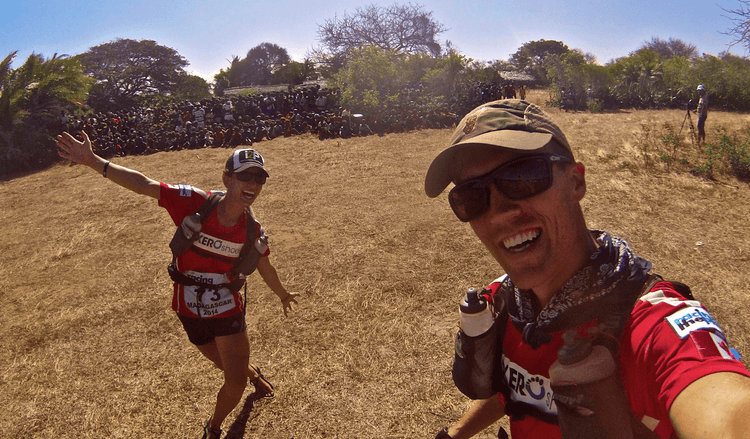
The Evolution of Xero Shoes in an Ultra Marathon Running Couple
Xero Shoes is a company that has come a long way. Looking back, we have come quite a long way as runners and adventurers. As we've grown, we've realized what a long way we've come WITH our Xero Shoes. We ordered our first pair of Xero Shoes in 2013 after reading the book Born to Run and wanting to get more involved with running minimalist. At that time we had both caught the running bug, and were running in our super smelly vibrate 5 fingers!The first pair of Xero Shoes we ever wore were the 4mm DIY sandals and we wanted to get trained up in them for our first ultramarathon together. Our biggest hurdle? It was winter in Edmonton, Alberta, Canada, and our race was only 3 months away. We had a few chilly runs in the cold with numb toes, to say the least. We managed to get enough training in, as we finished the Born to Run 100km race that we had planned! Later that year, we also ran a 50 mile ultra in Fernie, BC (Rocky Mountain style running!), a 100 miler in South Dakota (pretty flat, but HOT), and a 100km race in Costa Rica (where we legitimately ran with Tarahumara runners from Mexico!!). All of these were done in either the 4mm or the 6mm DIY sandals. So if any of you are still wondering “can you run in these?” Yes, you can run for miles and miles!Ultimately, we ended up being the first runners to complete one of 4 Deserts’ 7-day, 150 mile stage races wearing sandals. A year or two later we were living in Chile and Xero Shoes had just released their Z-Trek sandals. This was perfectly timed as we had two ultras planned that year in Chile, yet both had a lot of mountain running on rugged terrain, so we were super excited to wear the Z-Trek sandals at it gave you a bit more stability when on gnarly or muddy surfaces. Very soon after the Z-Trek was released, they launched the Z-trail, and we realized this one was our unicorn. The Z-style rig with a tiny bit more width of sole made it a primo piece of footwear for long trail ultras. We ran a 100 mile race down the entire length of the Florida Keys and with how hot and humid it was, it was super nice to have that tiny bit thicker sole for the 27 hours of pounding. We weren’t quite sure they would ever make the jump, but in 2016 Xero Shoes released their first actual shoe. While the first styles weren’t really built for running, we were excited to see where it lead. Low and behold, it shortly led to the release of our single most favorite shoe (ever): the Prio. With an absolutely incredible fit, a slick look, and the comfort, it's by far the best shoe we've ever put on our feet. I wore my first Prio for a wet and muddy 50km ultra near Seattle, with only two training runs to test them out. Not a single blister and they performed like a dream! It’s interesting how when you buy a shoe that just fits…you don’t have to “break them in." The latest big win for us was when Xero Shoes took the Prio and beefed it up a bit to make the TerraFlex, an athletic shoe with a bit gnarlier treads and a tougher upper. It’s pretty much everything we could have asked for in a perfect Prio… but made more for tough trail running. We’ve run races in the Canadian Rockies with these, over in a Morocco, and all over the US where we can find good trails! There have been a number of styles that Xero Shoes has launched that we love as well, but these were the keystone pieces of footwear that really progressed with us along our ultrarunning journey and we look forward to seeing what they’ll come up with next! :)–Mel & Jon The content of this post does not constitute and is not intended to be a substitute for professional medical advice, diagnosis or treatment. Always seek the advice of a physician or other qualified health provider with any questions or concerns you may have about your health or a medical condition.
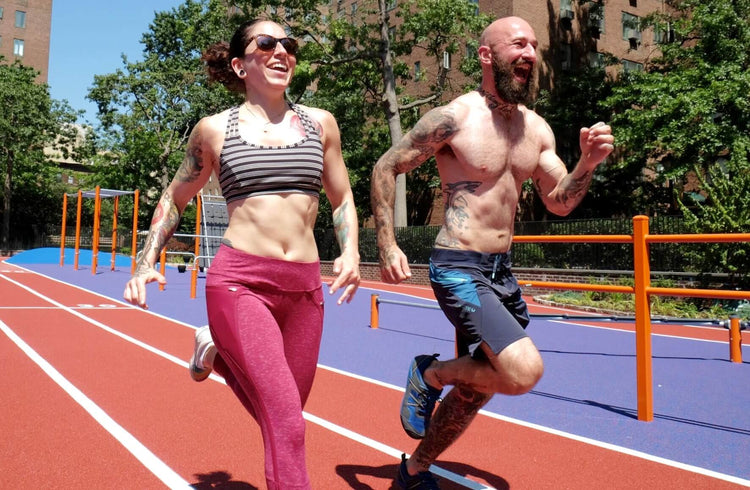
An Easy Running Program for Beginners
When I tell people that I love distance running, I often get reprimanded. “You’re going to blow out your knees,” people warn me. I don’t know if they genuinely think they are going to save me from the perils of ACL surgery or if people just like to get on a soapbox, but it’s getting old.Distance running is not inherently bad. When injuries occur, it is usually due to improper training and/or poor technique. If you take good care of your body and you know how to safely progress, there shouldn’t be an issue. Too many people get it in their head that they want to run a marathon, but they can barely even run a mile. If you don’t build up to longer distances gradually, you are setting yourself up for overuse injuries. In general, the rule is to increase your total mileage by no more than ten percent each week. In the beginning, I suggest you start out by alternating between short intervals of running and walking. You don’t need to follow a strict protocol, just run at a steady pace for as long as you can (which might be anywhere from 30 seconds to several minutes). Then when you need to, take a break and walk until you catch your breath. Repeat this process for 20 or 30 minutes, then stretch out and call it a day. Al and Grace Kavadlo running up a storm!In time, your walk breaks will get shorter until you can eventually run for 30 minutes or longer without a break. Once you can do that, you can start going for longer distances, or try alternating between jogging and sprinting for your interval training.If you want to do a Marathon or Half-Marathon, be smart about it – you’re going to need to run at a substantially slower pace and gradually build up your mileage. This type of running is usually referred to as long slow distance or “LSD” running. Anyone who’d want to run a Marathon must be tripping, right?LSD running is slow enough that you can maintain a conversation while running, so feel free to invite a workout partner. Take your time on LSD runs, it should feel almost like how walking feels to a non-runner.Going from being a non-runner to completing a marathon can be a journey of years. There is no rush. Just enjoy the process and take things one step at a time.–Al Kavadlo The content of this post does not constitute and is not intended to be a substitute for professional medical advice, diagnosis or treatment. Always seek the advice of a physician or other qualified health provider with any questions or concerns you may have about your health or a medical condition.
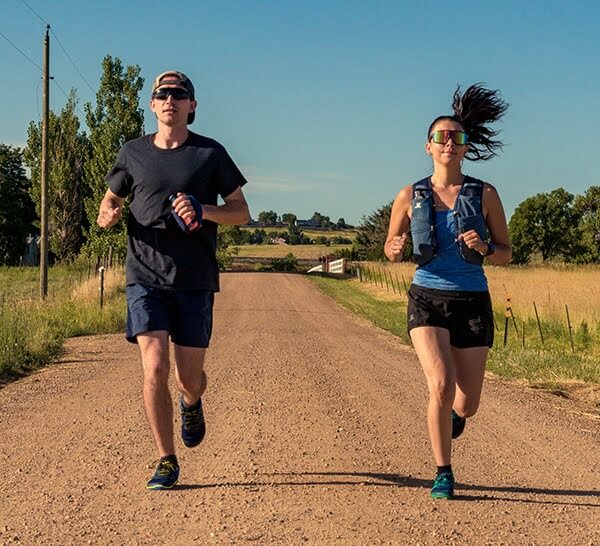
DO NOT “TRANSITION SLOWLY” TO BAREFOOT RUNNING
The more time you spend researching barefoot running and minimalist running — the more articles, interviews with doctors or runners, news stories, and research you dive into — the more you’ll hear one particular warning.Transition to barefoot running SLOWLY. If you make the transition too quickly, you’ll get hurt.Actually, if the piece supports running barefoot, you’ll hear this as a recommendation. If the piece is “anti-barefoot,” then it’ll be a warning.Why You Shouldn’t “Transition Slowly” to Barefoot RunningAdmittedly, even on this site I say something that could sound similar about how to start running barefoot.But to focus on how quickly or slowly you make the transition is to miss the point. Running barefoot safely and enjoyably isn’t about whether it takes you a day, a week, or a year to do so. It’s about HOW you make the transition, not HOW LONG it takes to make it.Transitioning safely to barefoot running (or running in minimalist footwear) is about form, not about seconds on the clock.7 Tips to Help You Smoothly Transition to Barefoot RunningFollow these rules for a safe and smooth transition to barefoot running: Go barefoot or wear a truly minimalist shoe Run on hard and smooth surfaces Your foot should land under your body Use less energy and effort Have your feet touch the ground as little as possible Pick up your cadence Have fun Let’s dive into each of these tips. 1. Go Straight to Barefoot (or Wear a TRULY Minimalist Shoe)It may seem logical that if you've been wearing a shoe with a lot of cushioning or a highly elevated heel, you would want to just slowly transition by starting with a shoe that has less cushioning and a lower heel… and then less and lower until you’re ready for running barefoot or in a barefoot-style shoe.In reality, transitioning to minimalist shoes by going slowly to thinner shoes is not the best way to learn to run barefoot or to run with proper, natural form. Dr. Irene Davis showed how “transition shoes” (which she called “partial minimalist”) can be worse for you than any other shoe, or being barefoot.Instead, you want to go straight to being actually barefoot, since that’ll give you the most feedback, and feedback is what helps you develop natural running form. If that seems too crazy, you can wear a truly minimalist, or “barefoot” shoe with a flat, flexible sole, no unnecessary cushioning, and a wider, foot-shaped toe box.Either way, the idea is to go as close to barefoot as you can and simply start SMALL and SLOW. More about that in a moment.2. Run on Hard and Smooth SurfacesIt also seems logical that you’d want to run on a cushioned surface, like grass.But, successful barefooters recommend running on a HARD, smooth surface… the reason is that you get more feedback from running on a nice road or bike path than you do from running on the grass. Plus, grass tends to be uneven, which could lead to tripping or ankle sprains, and there could be things hiding in the grass that you don’t want to step on… or in.If you want to see a barefoot runner get misty-eyed, show them a freshly painted white line on the side of the road. It's soft, it's smooth, it's cool, it's delightful :-)3. Your Foot Should Land Under Your Body When your foot touches the ground, it should be almost directly under your body. Don’t “overstride.” That is, don’t reach out in front of you with your foot in order to land. Many people who’ve been running in padded, motion-controlled shoes already overstride, reaching out with their heels and landing with an almost straight leg. Some people have heard that when running barefoot, you're supposed to land on your forefoot and will still overstride, but point their toes in order to land on their forefoot.Do not do this!Landing on your forefoot, with your foot out in front of your body puts extra stress on the forefoot and could lead to problems or injury. 4. Use Less Energy & EffortMany people think that when you start running barefoot, calf pain and Achilles pain are almost required. Trust me, 99 times out of 100 calf or Achilles pain comes from using too much effort. And, trust me again, you’re probably not the 1 out of 100 for whom it’s not.As you transition to barefoot running, focus on relaxing, using less energy and effort. For example, rather than pushing yourself off the ground with your foot/toes, try to lift your foot off the ground by flexing at the hip. Pushing off the ground uses WAY more calf muscle effort than is necessary. Similarly, if you think you have to stay on your toes and never let your heel touch the ground, which isn’t true, you’ll put more strain on your Achilles tendon than you need. You can let your heal naturally come to the ground instead.5. Touch the Ground as Little as PossibleWhen barefoot running, or running in truly minimalist shoes, try to focus on touching the ground as little as you can. Rather than “landing” on your feet, think of your feet as something that only touch the ground for as little time as necessary.One way to think about this is that when your feet touch the ground, have them moving at the speed you’re traveling across the ground. Another image that could help here: Your feet should contact the ground more like a wheel that just rolls over it, rather than like a stick that gets planted and pulled out.Another idea: Imagine lifting your foot off the ground before it even touches it. This could help you get your foot off the ground faster.Many other instructions you may find about how to run barefoot are just cues to help you get the correct foot placement and use less effort. 6. Pick Up Your CadenceCadence is the number of steps you take per minute.Picking up your cadence means taking slightly more steps per minute without running faster.There's a commonly held idea that when you run barefoot your cadence should be 180 steps per minute. 180 is not a magic number. Increasing your cadence (just a bit) makes it easier to place your feet under your body, at the correct speed, and with less effort. You can’t “plant” your feet, when they have no time to spend on the ground. You will want to experiment with different cadences that are slightly faster than what you're used to. Knowing that anything different from what you've been doing will initially feel unusual. And, yes, running with a metronome can help.7. Have Fun!You can spot a barefoot runner from 50 yards away. They look like they're having a good time. They're often smiling.So, perhaps the best instruction to help you transition to barefoot or minimalist running is to use fun as your guide. Listen to your body and HAVE FUN… And if you're not having fun, do something until you are.Besides, if you’re just grinding out the miles it’s almost guaranteed that you’ll fall into bad form and increase your chances of injury. How Long Does the Transition Take?The length of time it takes to learn to run in barefoot-style shoes or completely barefoot is different for everybody. For some, it takes no time at all because they already run in the way I described. For others, it takes longer, since they are learning a new skill and a new way to move — and different people learn at different rates. For a rough timeline, it should take anywhere from 1-4 months to fully transition to barefoot running.Effective and enjoyable barefoot running is an ongoing process. You will continue to improve the longer you do it. Taking the time to transition to barefoot running will be worth it in the long run. Focusing on the amount of time it takes you to make the change is putting your attention on the wrong thing. If you believe that it’s just about putting in the hours until you’re suddenly a successful barefoot runner, you may never make the form adjustments that will give you what you want.On the other hand, if you pay attention to the correct things, the important things – to your form, to relaxing more, to having fun – that could dramatically speed up your transition time. Pay attention to your sensations — if it hurts, take a look at the tips above and try something different until it doesn’t hurt. No pain, GAIN.Turn off the clock and turn on your awareness; you’ll have fun running barefoot (or wearing barefoot shoes) in no time.The content of this post does not constitute and is not intended to be a substitute for professional medical advice, diagnosis or treatment. Always seek the advice of a physician or other qualified health provider with any questions or concerns you may have about your health or a medical condition.
What's the WORST surface for running barefoot?
When I tell people that I run barefoot (or when they see me out running without any shoes), the first response I get is: "Oh, so you run on the grass?" Or when I suggest to people that they might want to try running barefoot, the first thing they say is, "With my feet/knees/ankles/eyelashes, I'd need to run on the grass." I mean, it makes sense, right? Grass is soft. Feet are soft. Therefore, feet should be on grass. Barefoot = Grass is the common wisdom. But wisdom is rarely common, and what's common is rarely wise. Here's what I can tell you, though. And it's not just me, every accomplished barefoot runner I know will say the same thing. And all the other good coaches I know agree. In fact, what I'm about to say is SO true, that if you meet a coach who tells you otherwise, RUN AWAY (barefoot or not, I don't care) from this person as quickly as you can, because they don't know what they're talking about. Here it is: THE WORST SURFACE for learning to run barefoot is GRASS. THE WORST. ABSOLUTELY. Why? Three big reasons: BIG: Who knows what's hiding in the grass. If you can't see it, you might step on it. BIGGER: One of the principles of barefoot running is that you don't use cushioning in your shoes... well, when you run on grass, you've basically taken the cushioning out of your shoes and put it into the ground. BIGGEST: Running on grass, or any soft surface does not give you the feedback you need about your barefoot running form to help you change and improve your form. The best surface for barefoot running is NOT grass or sand or anything soft, but the smoothest and hardest surface you can find. For me, here in Boulder, Colorado, we have miles and miles of bike path. In New York City, the sidewalks are perfect! So, what makes a hard, smooth surface the best? It's the biggest reason, from above: FEEDBACK. Grass and sand and soft surfaces are too forgiving of bad form. Hard smooth surfaces tell you, with every step, whether you're using the right form. If it hurts, you're not. If you end up with blisters, you didn't. Pay close attention and each step is giving you information about how to run lighter, easier, faster, longer. I'll never forget going out on the University of Colorado sidewalks with the Boulder Barefoot Running Club. I had a blister on the ball of my left foot (more about that in another lesson). But I decided to see if I could run in such a way that I didn't hurt . At first, each step sent a shooting pain up my leg. Then I made some adjustments and I just felt the friction on the ball of my foot. By the end of the first mile, I had made some other adjustments -- using each step as an experiment -- and the next thing I knew I was picking up the pace while putting out less energy than ever. I was running faster and easier than I'd ever run without shoes... and it was painless. This would have never happened on grass. I needed the feedback of the hard surface. If you want to see a barefoot runner get a wistful look in his or her eye, mention a newly painted white line on the side of a road. Smooth, solid, cool... it's the best! ;-) Oh, and it's probably no surprise that the advantage of Xero Shoes is that when you wear those on the road, they still give you that feedback you need... but with protection from the surface.
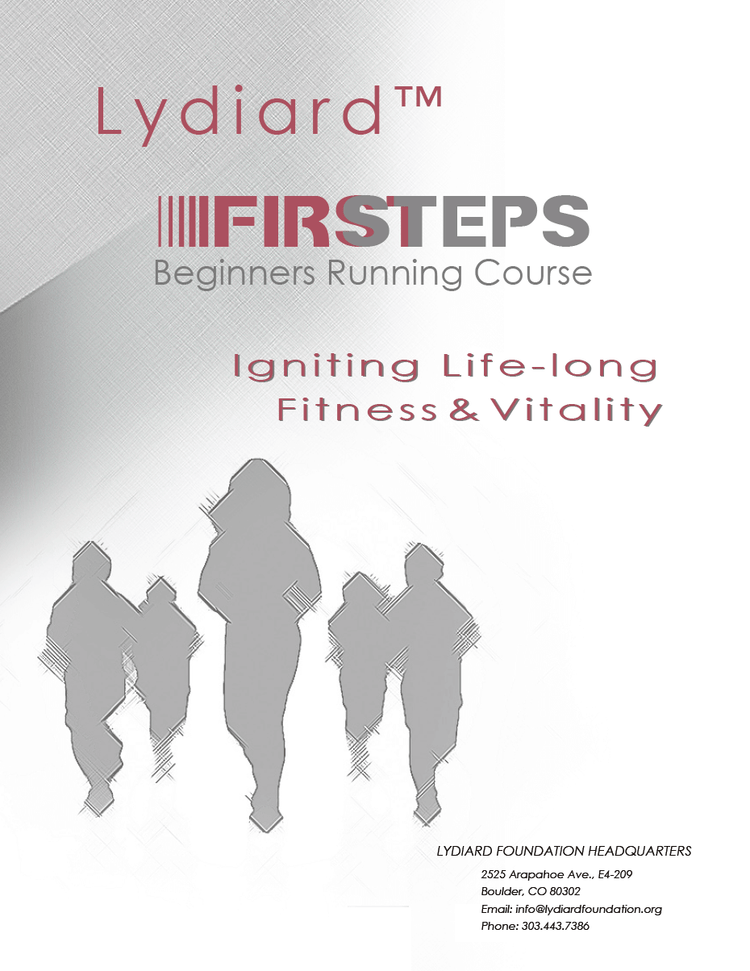
Lydiard Training Plan for Runners
Arthur Lydiard was one of the most accomplished running coaches of all time and his training methods revolutionized the sport.The Lydiard Foundation is carrying on Arthur's teachings, led by Lorraine Moller, a 4-time Olympian and Olympic bronze medalist in the marathon, and Nobby Hashizume.If you're looking for a distance running training program, the Lydiard method will serve you quite well. And thanks to Lorraine and Nobby, you can grab the Lydiard First Steps course right here.Then find out more about Lydiard training at www.xeroshoes.com/likes/lydiard.

Become a Better Runner -- 3 Free Chi Running Lessons
If you want to become a better runner... or start running enjoyably, then you'll like this video introduction to Chi Running.But, more, you'll like the 3 Free Lessons you get from Danny Dreyer, creator of Chi Running, when you CLICK HERE

Proper foot placement when running
If someone tells me they're having almost any problem or issue with natural running, the odds are well over 75% that the issue comes from "overstriding."Overstriding is when you land with your foot further out in front of your body than is necessary or ideal. Watch little kids run and they almost never do it. Not even when chased by ravenous chickens!See how the foot lands almost under the hips?Put modern running shoes on them, their gait will change, and they'll start to reach out with their leg, landing on the heel.Do this when you're barefoot and it HURTS.Do this in a barefoot-inspired or true-minimalist shoe, like Xero Shoes (both shoes and sandals), and you'll typically hear of three issues: Sliding off the sandal or into the thong of the huarache-style sandal -- this is because the sandal hits the ground and stops moving as your foot continues to move forward. Tightening the lace or webbing isn't a real solution. Slapping noises -- this comes from, well, slapping your foot onto the ground. When you land on your heel, your foot can't articulate properly and the forefoot comes down with extra force. If you land on your forefoot when you overstride, that can lead to stress fractures, but first it'll just be loud. See this article for some more info. Heel blisters -- landing with your foot in front of your body is like putting on the brakes with each step, and that horizontal deceleration creates friction, and friction leads to blisters. See How to Avoid a Barefoot Running Blister and see the first video at https://xeroshoes.com/barefoot-myths-lies-and-truth-free-video-series/ for more about this. If you land with your foot "under" your body (it may be slightly in front of your center of mass), all those issues go away. In fact, if you land that way, you can wear a sandal that's barely tied to your foot and it won't make any noise, nor will you slide off it and you won't get blisters. It'll be like you're running barefoot, but just before you land, someone throws a piece of rubber on the ground.Here's one of my favorite examples. In this video, the runner accelerates to full speed on a carpet that's over ICE... then runs for a few strides at full speed without any slipping.You'll have to pause the video and play with the slider to see how his feet are landing under his center of mass.What this highlights is that when you're running at a constant speed, especially at full speed, almost all of the force into the ground is vertical. Add more horizontal force, e.g. by overstriding, and your feet would slide right out from under you.Whattya' think? The content of this post does not constitute and is not intended to be a substitute for professional medical advice, diagnosis or treatment. Always seek the advice of a physician or other qualified health provider with any questions or concerns you may have about your health or a medical condition.

Paleo Diet + Barefoot Running = ?
Are you on the Paleo diet, or curious about it?Many people who discover paleo -- and I'm neither endorsing it or bashing it in this article -- move past the diet and into the "lifestyle," looking to move and live more like our hominid ancestors. And, not surprisingly, one way to recapture our movement history is by running in bare feet.Neanderthals didn't wear Nike and you don't need to either.All that said, I had the privilege of getting interviewed by Aaron Olson of www.paleorunner.orgCheck it out here, then let me know what you think in the comments, below...What do we talk about? Are sore calves and Achilles necessary when learning to run barefoot? Will Xero Shoes protect you if you're trail running? Why doctors who criticize barefoot running are usually complete morons! Are there any times where you need shoes? Can you run fast in huarache running sandals? What it's like to be on Shark Tank Why you need to USE your feet the way they're made to be used Do I eat Paleo? What do I eat? Enjoy!The content of this post does not constitute and is not intended to be a substitute for professional medical advice, diagnosis or treatment. Always seek the advice of a physician or other qualified health provider with any questions or concerns you may have about your health or a medical condition.
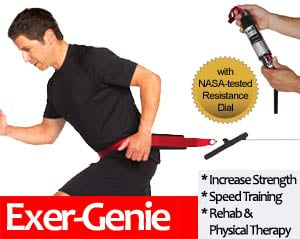
Run faster and stronger with the Exer-Genie
I know, I know... "Exer-genie" sounds like the name of a fitness gadget that women in the 1950's would have used.But don't let the name fool you. This is one serious piece of equipment, all rolled up into a tiny, travel-friendly, package that anyone of any fitness level can use to get stronger and faster.The Exer-Genie has been used by Olympians and professional sports teams for decades. And, frankly, given what a gadget geek that I am (especially fitness gadgets), I can't believe that I only recently discovered it.Let me show you a quick video of how my training partner, World-champion sprinter Cathy Nicoletti, and I now use the Exer-Genie as part of our sprinting training.In short: we'll do resisted runs with enough resistance to slow us down no more than 10%, usually increasing the resistance with each run, and then finish with a non-resisted run.We're planning to integrate more heavy-resistance running (for improved drive phase performance), as well as resisted walking lunges and bounding. Sometimes we'll use the Exer-Genie at the end of a speed workout. Other times we do an entire workout with the Exer-Genie.There are essentially 2 models of the ExerGenie that you'll be interested in: The Classic system with a shorter rope for strength training (you can practically replace a gym's worth equipment with this), or the long-rope Speed system for doing resisted running (and jumping, bounding, lunging, etc.). If you're into suspension training, like with a TRX, you'll want to look at the Dynamic Life system as well... a variation of the short rope system.The folks at ExerGenie are INCREDIBLY helpful and committed to your fitness. If you have any questions, just give them a call (number is at the website). Tell 'em we said Hi! Find out more about the Exer-Genie here.The content of this post does not constitute and is not intended to be a substitute for professional medical advice, diagnosis or treatment. Always seek the advice of a physician or other qualified health provider with any questions or concerns you may have about your health or a medical condition.
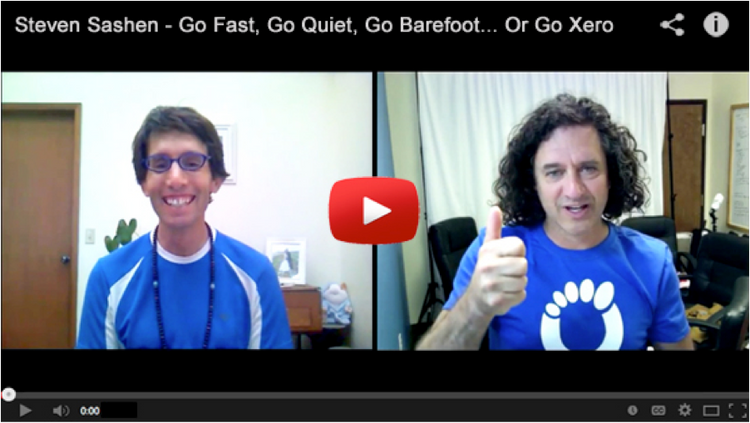
Mindful Running with Michael Sandler
Some readers may know that Michael Sandler is one of the reasons Xero Shoes exists.Back in the Summer of 2009 he said, "You know, if you treated this hobby of making barefoot sandals like a business -- and built a website -- I'd put you in a book that I'm writing called Barefoot Running."To make a long story short, 24 hours later I had a website ;-)Well, Michael has a new program called "The Mindful Running Program" and he interviewed me for it.Some of what we talked about: Using "mental rehearsal" (not visualization) to prepare for races How barefoot running can become instant meditation The 4 "neurological types" of barefoot runners, and what each one needs in order to improve And, then, on a personal note:What happens in my mind when I'm running a 100m, or when I was competing as an All-American gymnast... or when I was captured and shot at in Tienanmen Square in 1989!Click here to check out the interview, and leave a comment after you hear it.


